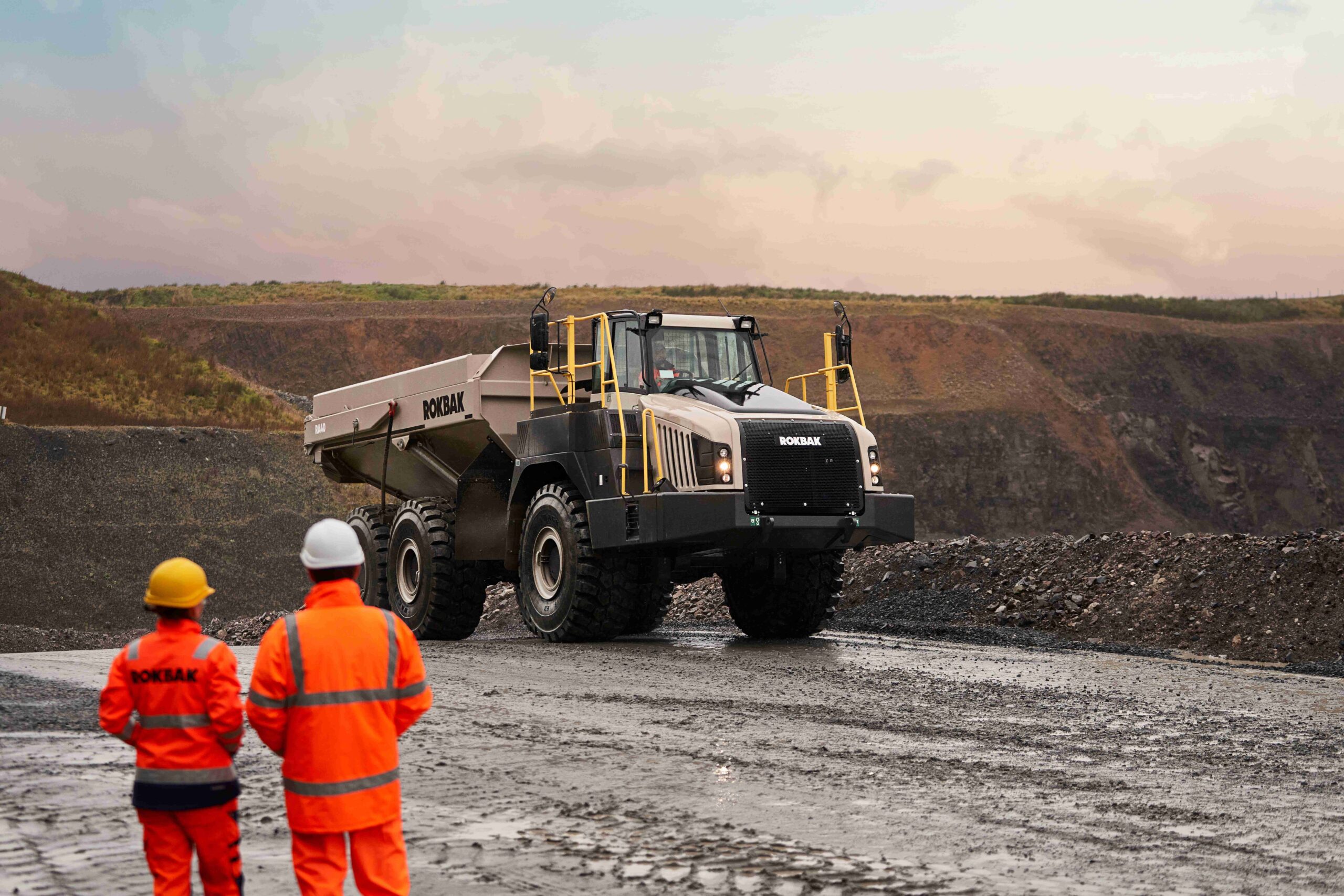Investing in an articulated hauler is a significant decision. Choosing the right truck can lead to increased productivity, more uptime and a safer working environment, as Rokbak explains.
Articulated haulers play a crucial role in various applications from commercial construction projects to quarries, mines and infrastructure developments. The best ADTs offer efficient transportation of heavy loads across challenging terrain and easy manoeuvrability on tight, tricky sites.
Before investing in an articulated dump truck, it is essential to consider several factors to ensure that the machine aligns with your specific needs and operational requirements. With its trucks designed and built for the toughest jobs and roughest sites, Scottish articulated hauler manufacturer Rokbak outlines five key considerations that should be integral to your purchasing decision.
1. Capacity and load handling
One of the primary factors to consider is the truck’s hauling capacity. You need to assess typical load capacity and weight to ensure that the equipment chosen can handle the demands of the specific application. Rokbak offers two hauler models, the RA40 is the largest with a gross power of 331 kW (444 hp), a maximum torque of 2 225 Nm and a 38-t payload. It is a popular choice for major infrastructure projects, with its effective power to weight ratio enabling the fast movement of heavy-duty materials. Like the RA40, the 28-t RA30, with a gross power of 276 kW (370 hp) and a maximum torque of 1 880 Nm, also benefits from a transmission retardation system, a fully adaptable drivetrain and easy maintenance to suit a variety of different job sites.
Consideration of the type and size of material being handled allows the truck’s load-carrying body to be specified correctly to ensure optimum payload, load retention and longevity. Body options such as side extensions for lighter materials, tailgates for free-flowing material retention and additional liner plates for highly abrasive or large blasted rocks are all popular choices. Matching the hauler to existing complementary equipment ensures onsite efficiencies and safety.
- Terrain and site conditions
Articulated haulers are designed to navigate challenging terrain, but the extent of their capabilities can vary. Both the RA30 and RA40 provide excellent performance in all hauling conditions, from muddy terrain to slippery slopes and the scorching heat to sub-zero temperatures. It is important to evaluate the application and climate the truck will be used in, as well as consider the materials that will be transported and the topography of the site, including slope gradients, ground conditions and potential obstacles. Rokbak trucks offer top-level off-road performance. Choosing a hauler that can handle the specific conditions of the site is crucial for optimal efficiency and safety.
3. Fuel efficiency and operating costs
Operating costs, including fuel consumption and maintenance, are significant considerations for any heavy equipment investment. Efficiency in the use of power is as important as having a high-performance truck. Rokbak articulated haulers are built to perform while also setting new standards for total cost of ownership and a commitment to sustainability as part of the Volvo Group’s journey to net-zero.
A lean-burning, high-performing engine and responsive transmission shift control are good for low fuel consumption and environmental impact – as well as increased uptime and extended service intervals. An adaptable, perfectly balanced drivetrain provides performance and productivity in all hauling conditions, while meeting worldwide emission standards with low cost of operation.
High-level, user-friendly retardation systems, as found in Rokbak trucks, facilitate control of the machine and allow the operator to manage the safety and speed of the hauler – increasing efficiency and reducing wear-and-tear with shorter cycle times on the haul route.
Machine owners should also look for strong after-sales support and assess the availability of spare parts and maintenance services. A well-supported machine will lead to increased uptime and lower operating costs throughout the equipment’s lifecycle.
- Operator comfort and safety
The well-being of operators is paramount in any heavy equipment operation. Features such as ergonomic design, operator visibility and the quality of the cabin environment provide a comfortable and safe workspace that not only enhances productivity, but also contributes to employee satisfaction and retention.
A planetary gear transmission – as found in the RA40 to deliver smooth, efficient gear shifting – also increases operator comfort. Haulers equipped with safety features such as stability systems with traction control, body tip inhibits and advanced braking mechanisms help to ensure a secure working environment.
- Connectivity
Modern articulated haulers often come equipped with advanced technology and telematics solutions. These features can provide valuable insights into machine performance, fuel efficiency and maintenance needs – helping machine owners to manage their operating costs. The RA30 and RA40 are linked to the Rokbak Haul Track telematics system, providing customers with complete visibility and control of the hauler, enabling you to monitor and manage fleets effectively.





